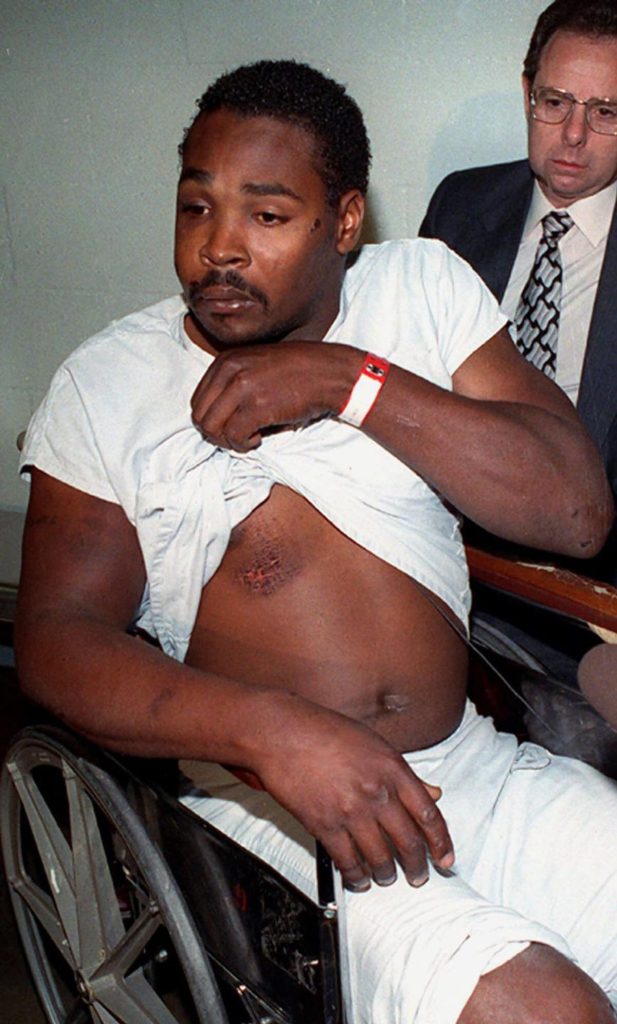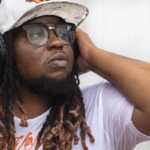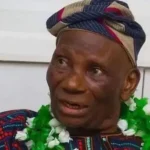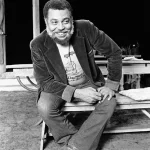Stories of police brutality in the United States have long been a problem people of the minority and especially people of colour have had to endure.
These reports of police brutality did not start in recent times as Rodney King, the man known by many people as the symbol of police brutality in the United States suffered his predicament way back in 1991.
Though deceased, Rodney King’s story still resonates with many African Americans as many more Black Americans are being subjected to torture and abuse from police officers.
Speaking in a recorded interview prior to his death, Rodney King shares his life, ‘being Rodney King.’
‘I have always had a problem with alcohol. I grew up in a home where my mom was a very religious person, she was Jehovah’s witness and my dad worked as a janitor. At night, my dad would take us with him to work from about 5pm till 2am doing his janitorial work. I was exposed to drinking at a very early age, because when my father drinks he beats us with extension cords.
I remember by the age of 8, my brother and I were already experiencing with berries. We will leave them to ferment and then drink the juice just because we liked how it tasted. By age 13, I was fully into drinking.’
On November 3, 1989, King robbed a store in Monterey Park, California. He is said to have threatened the Korean store owner with an iron bar and hit him with a wooden pole and made away with two hundred dollars in cash during the robbery.
He was caught, convicted, and sentenced to two years’ imprisonment. He was released on parole on December 27, 1990, after serving one year in prison.
On the night of 3rd March, 1991 while he was on parole, the unexpected happened.
Rodney was stopped by the police for drunk driving, was tased, beaten with metallic batons and had many of his body parts broken.

‘The only reason why they did not kill me out there in the open was because there was a tour bus parked just within view range and they did not want those people to witness my murder. But at the time, I would have preferred to die and just get all of this over and done with. Being tased, while blood oozed out of my body and my body parts broken was hell.’
It took over five hours of surgery after Rodney was rushed to the hospital for his body to be fixed up. He had hurt his eye socket, broken a jaw, broken his leg, and had bruises all over his body.
Fortunately for Rodney, civilian George Holliday, filmed the incident from his nearby balcony and sent the footage to local news station KTLA. Though the film clearly showed the officers brutally hitting King between fifty-three and fifty-six times and the Angeles police chief at the time, Daryl Gates had said he believed his officers used excessive force in taking Rodney into custody, a jury in 1992 acquitted all four offices of any wrong doing after the trial.
This was the beginning of the end. Many residents of Los Angeles took to the streets, marching to express their displeasure at the verdict. According to King’s lawyer, ‘This verdict is a slap on the rule of law. It shows anyone can beat and brutalise another and simply be set free.’
Rodney, who was not called as a witness during that trial said, ‘I was numb and shocked. I could not believe they had passed a verdict like that after watching the video. Everyone who saw the video was outraged by it, so it was surprising the verdict went that way. I was very sorry and sad.’

The rioting lasted six days and killed 63 people, with 2,383 more injured. After three days, Rodney King addressed the protestors in what became known as the ‘emotional speech.’ He called on everyone to back down and simply try to live in peace. This speech has been credited by many as what finally ended the riots.
In 1993, the federal government took up the case and prosecuted a separate civil rights case, obtaining grand jury indictments of the four officers for violations of King’s civil rights.
Their trial ended on April 16, 1993, with two of the officers being found guilty and sentenced to serve prison terms.
However, finally in 1994, a jury found the city of Los Angeles liable and awarded King $3.8 million in damages.
‘The victory after hearing this verdict cannot be explained. Finally, justice had been served, finally I was happy the police force was going to learn from this and be more cautious. Most of the money I won though went into legal fees and my medical fees. Till date, I still have some medical bills to pay. There was just so much damage done to me everywhere.’
Hoping this monumental incident would be the end of Rodney’s dealings with the police, it did not turn out so.
Even after all of this, Rodney’s attachment to alcohol and drugs, coupled with his newfound fame only caused him more problems. He was arrested by the police on many other accounts of still drunk driving and other accounts of having hit his partner.
‘The pressure of being Rodney King, I think got to me at some point in time. I have a mother whom I totally adore, and I do not disrespect women in any way. All I can say is, I let it get into my head and then I misbehaved.’
According to Rodney King, there was no day before his death that he was not reminded of the horrid incident that happened in 1991. ‘I wake up with aches and pains all over my body. The sight of cop cars trigger some sort of fear in me. Though they treat me with a lot of respect now, whenever there is an arrest or a run-in.’
Commenting on what happened to another black teen, Trayvon Martin, who was also shot and killed by the police, King said, ‘watching that video sent shivers down my spine. The scream in that young man’s voice was the exact same one I had when I screamed that night. It is the scream of someone who was afraid he was gonna die in the streets. His death really broke my heart.’
In April 2012, King published his memoir, The Riot Within: My Journey from Rebellion to Redemption’.
The book describes King’s turbulent youth as well as his personal account of the arrest, the trials, and the aftermath
On June 17, 2012, King’s partner, Cynthia Kelley, found King dead at the bottom of his swimming pool.
The autopsy report read: “The effects of the drugs and alcohol, combined with the subject’s heart condition, probably precipitated a cardiac arrhythmia, and the subject, incapacitated in the water, was unable to save himself.














